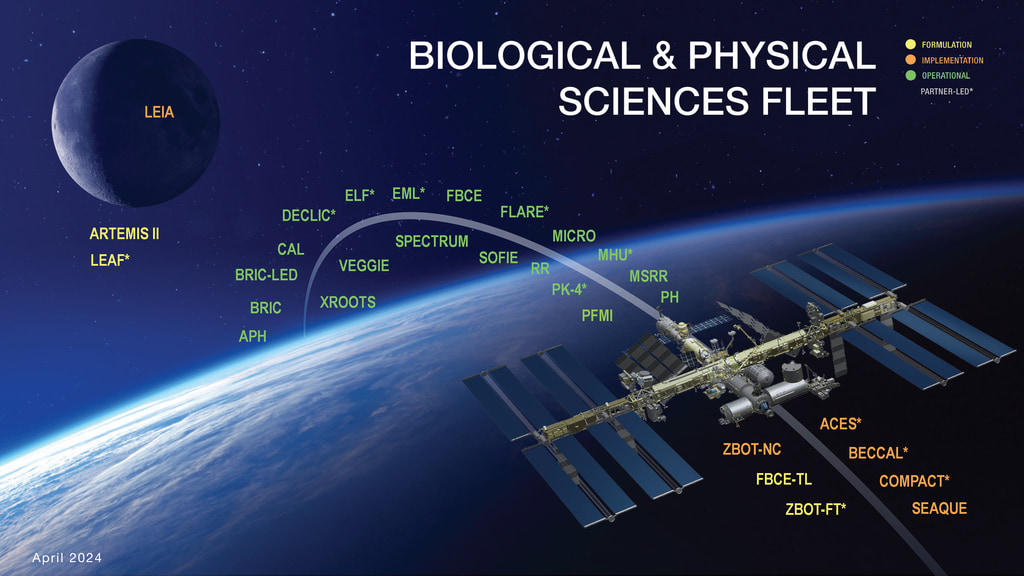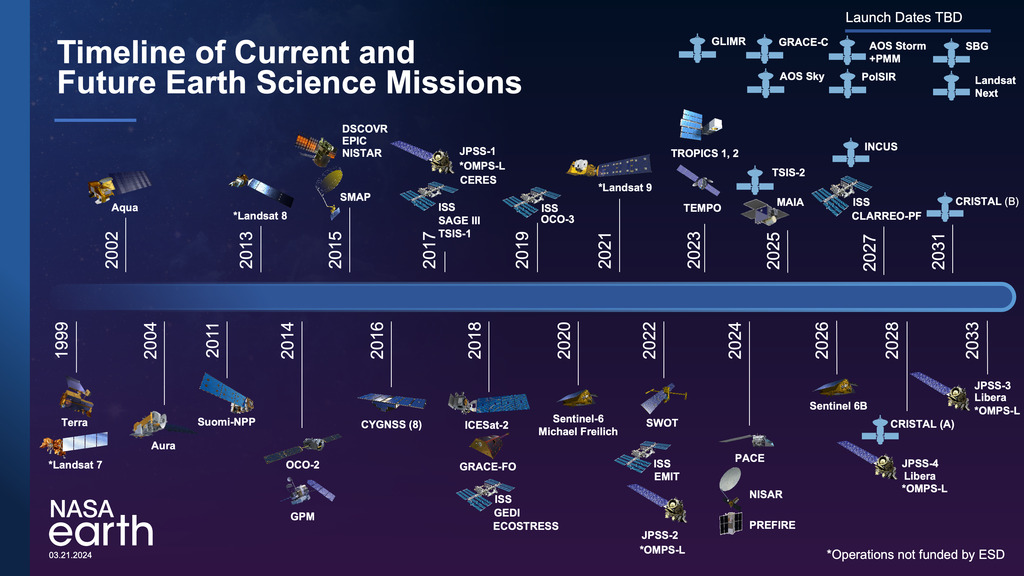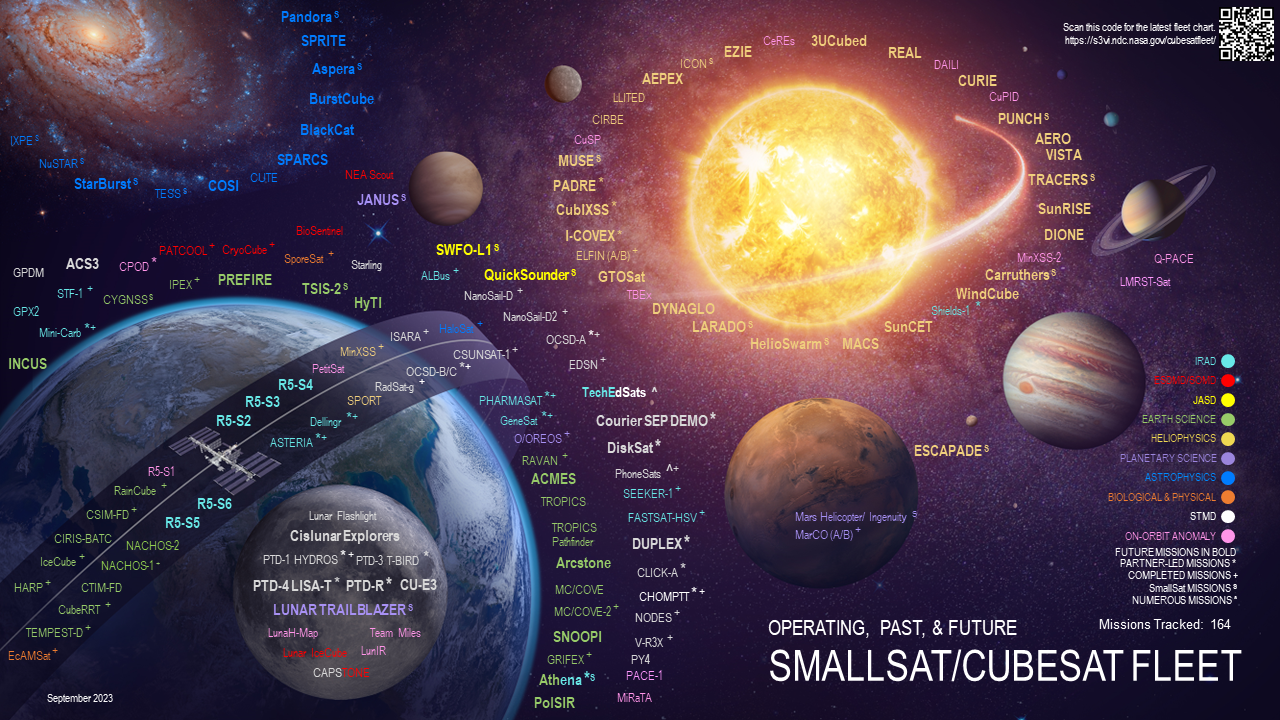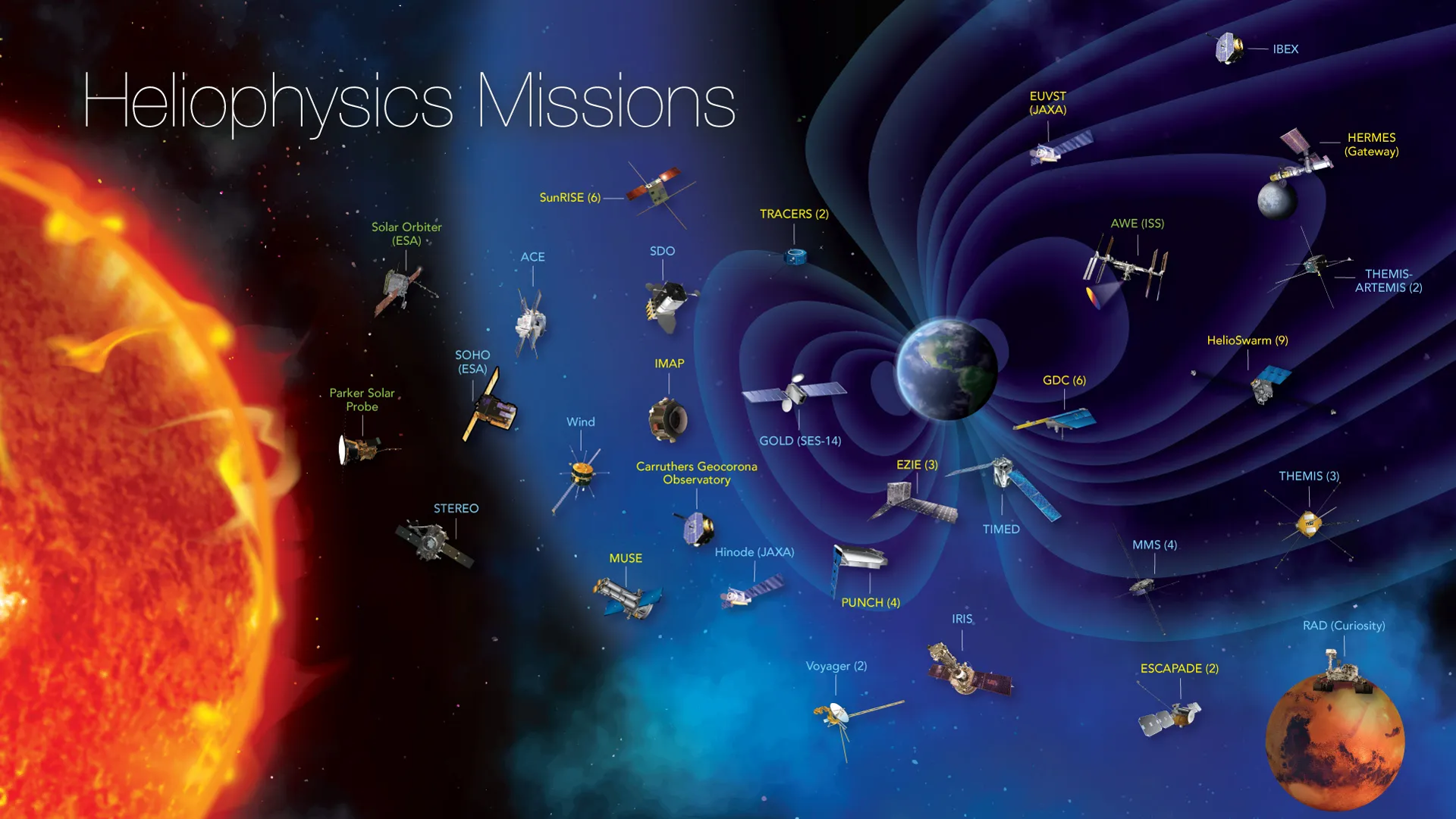NASA Earth Science Division Missions
In order to study the Earth as a whole system and understand how it is changing, NASA develops and supports a large number of Earth observing missions. These missions provide Earth science researchers the necessary data to address key questions about global climate change.
Missions begin with a study phase during which the key science objectives of the mission are identified, and designs for spacecraft and instruments are analyzed. Following a successful study phase, missions enter a development phase whereby all aspects of the mission are developed and tested to insure it meets the mission objectives. Operating missions are those missions that are currently active and providing science data to researchers. Operating missions may be in their primary operational phase or in an extended operational phase.
Missions begin with a study phase during which the key science objectives of the mission are identified, and designs for spacecraft and instruments are analyzed. Following a successful study phase, missions enter a development phase whereby all aspects of the mission are developed and tested to insure it meets the mission objectives.

Current Earth Fleet Chart

Missions studying the Water and Energy Cycle

Missions studying tropical cyclones

Missions studying sea surface height

Missions studying ocean color and the biosphere

Current Airborne Fleet

Missions with International Partners
For More Information
Credits
Please give credit for this item to:
NASA Headquarters
-
Graphic designer
- Jenny Mottar (Digital Management, Inc.)
-
Technical support
- Marit Jentoft-Nilsen (Global Science and Technology, Inc.)
- Amy Moran (Global Science and Technology, Inc.)
- Nathan Marder (Global Science and Technology, Inc.)
Missions
This page is related to the following missions:Release date
This page was originally published on Monday, July 22, 2013.
This page was last updated on Monday, June 16, 2025 at 3:13 PM EDT.







